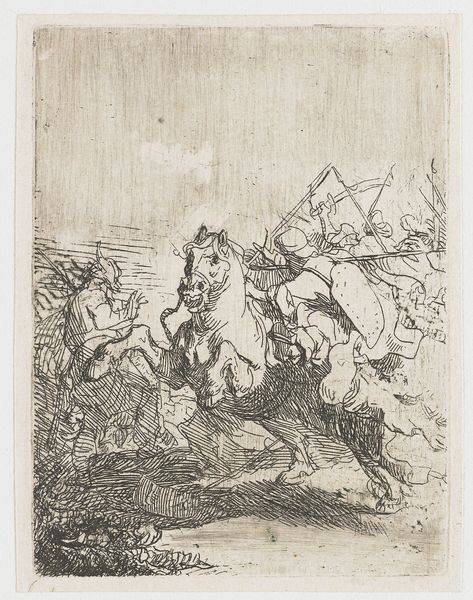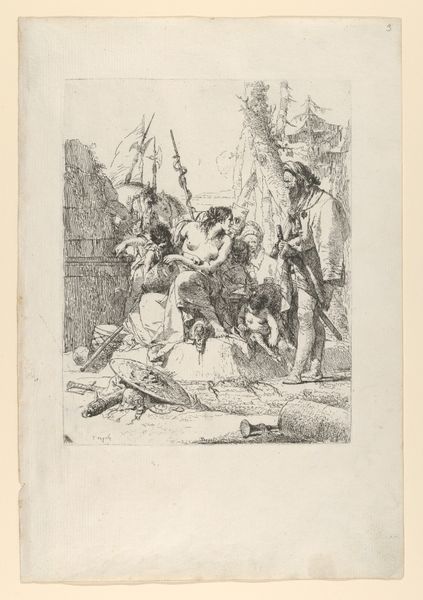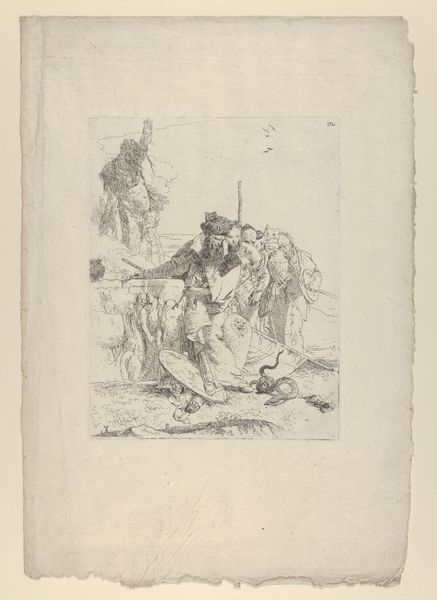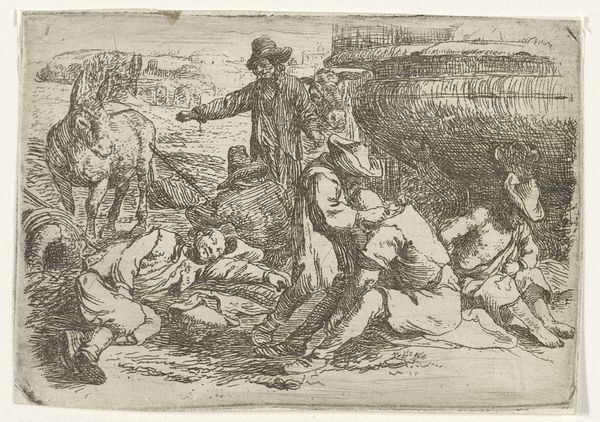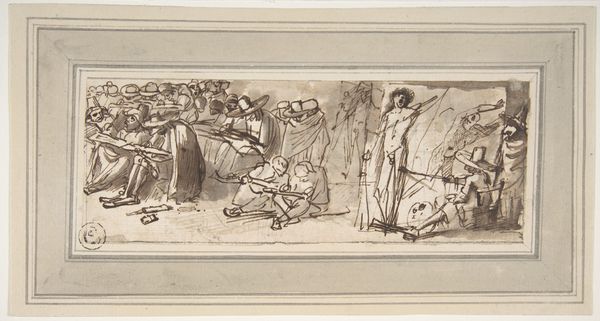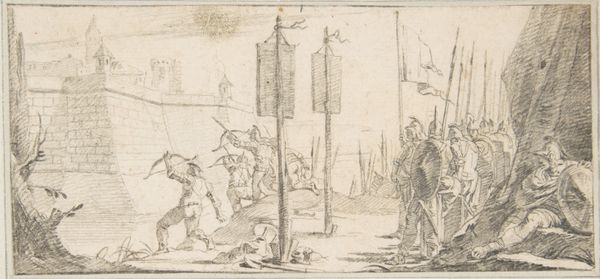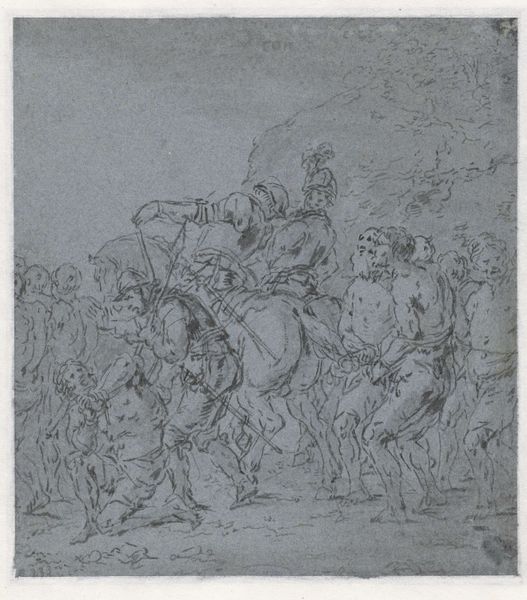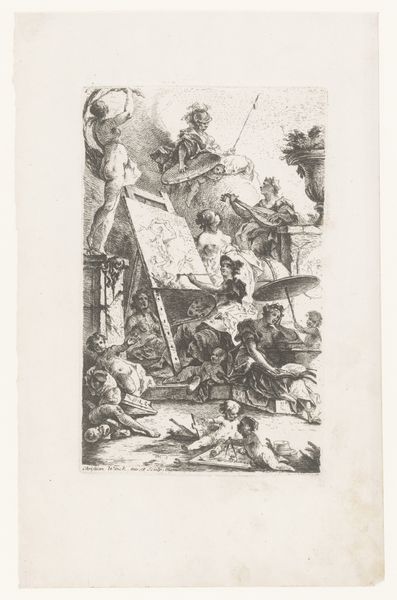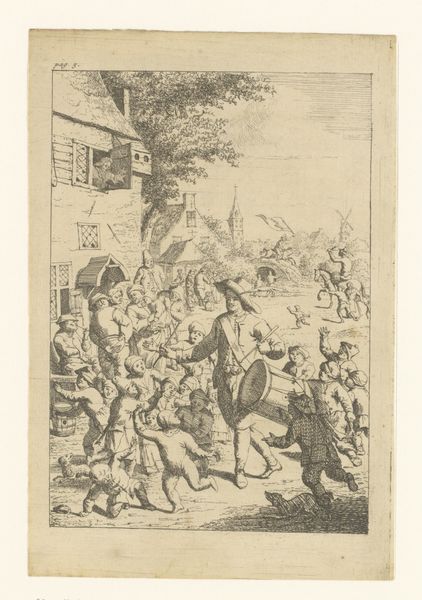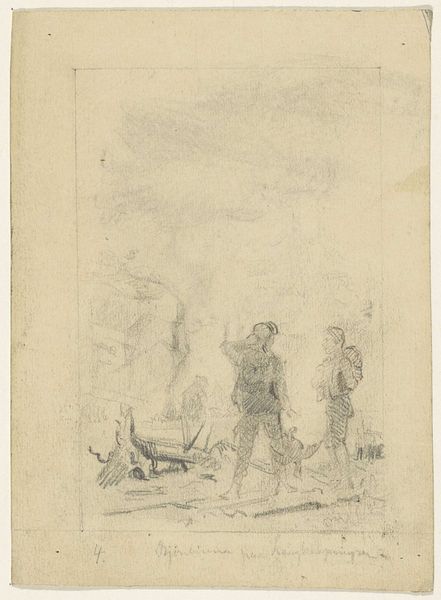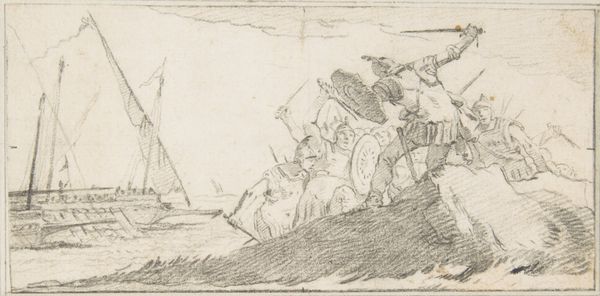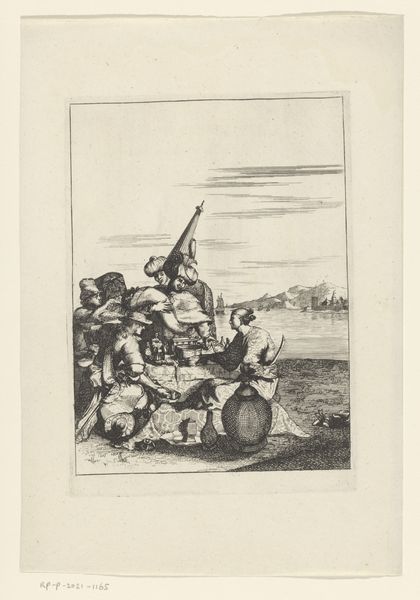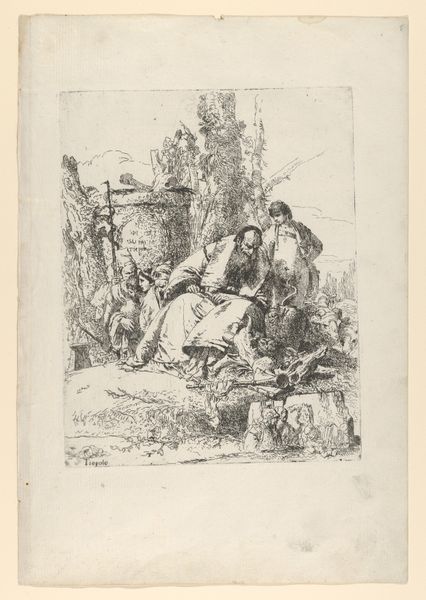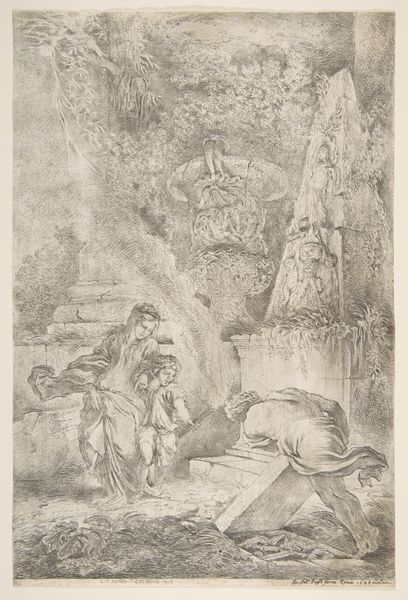
print, etching
#
baroque
# print
#
etching
#
landscape
#
genre-painting
#
history-painting
Dimensions: 200 mm (height) x 150 mm (width) (bladmaal)
Curator: Here we have Hendrik Verschuring's etching, "Kavalerifægtning," likely created between 1627 and 1690. It's held here at the SMK, the National Gallery of Denmark. What strikes you first? Editor: The overall composition leans into chaos. It’s quite dynamic, isn’t it? The etched lines create a frenetic energy, like a snapshot of a world tilting on its axis. I find myself searching for a stable visual anchor but everything appears to be careening. Curator: Indeed, the composition mimics the very subject matter—the melee of battle. Consider, though, the use of the obelisk on the right. That stands erect and immutable while men and beasts clash. It’s almost a symbolic counterpoint, a visual representation of power transcending human conflict. Do you sense that too? Editor: Yes, the obelisk certainly presents a static, architectural element. But its placement, slightly off-center and to the rear, reduces its authority. Its role is somewhat secondary. Note also how the lines of the etching technique work here; see the foreground, with the fallen horse almost bursting forth due to its strong dark outline. Curator: A powerful detail! Beyond the dynamism, observe how Verschuring invokes familiar tropes of the time: the romanticized clash of men in war, a recurring motif in the visual culture aimed at glorifying nationalistic pride, valor, or, indeed, even conquest. Isn't that also what lends a kind of historical continuity here? A conversation through conflict and power... Editor: Perhaps, but isn’t that inherent in Baroque compositions? This controlled explosion—all of it perfectly placed and orchestrated, a spectacle as a means in itself, and certainly no message other than awe and reverence toward power and drama. Look at how lines, forms, and visual weight are calibrated to drive this dramatic narrative. Curator: A calibrated drama that evokes a potent visual language. Editor: Precisely. This isn’t mere documentation of history. This is crafted theatre! Ultimately, it brings Baroque aesthetics down into these details of war and shows what gives continuity to representations of such historical scenes, like theatre directing us in symbolic spaces, a psychological continuity that persists as cultural history. Curator: Fascinating! These insights illuminate how we not only view art, but how these images continue to shape our collective memory.
Comments
No comments
Be the first to comment and join the conversation on the ultimate creative platform.
